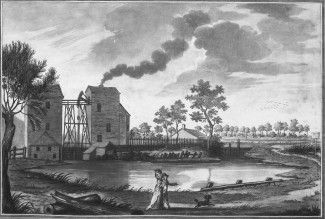
Johns Hopkins UniversityEst. 1876
America’s First Research University
Selling water for profit in the 17th century


Few things are as precious and important in our lives as water. What other material substance has been classified as a human right? Does the universal daily need for water mean, however, that it must always be in public hands, or should private companies be allowed to control access to it and make profits from selling it? Would private enterprise somehow commodify a human right and create a profit-controlled gateway to a basic necessity? Although the instinct to keep water in public hands has been strong, some societies have been willing to privatize their water utilities. Thames Water in London, for example, is a private company supplying the metropolis. Created in 1989, it serves millions of people in southeast England every day. Even in urban areas where the provision of piped water is in public hands, for-profit companies supply any increasing quantity of water people drink in bottles for sale.
For-profit water companies are not, however, only a new phenomenon, the product of Thatcherite liberal economic policies that created Thames Water, or an earlier 19th century era of laissez-faire capitalism when many private water companies supplied cities. Indeed, for-profit water companies have a long history, and have a fair claim to being at the root the modern system of supplying water through large integrated networks. Urban water supplies in much of Europe (and even the rest of the world) were largely owned by local authorities for much of the Medieval period, or were controlled by institutions such as guilds or monasteries. Even at this time, however, some profits were collected by people selling water from tankards they carried to houses of the wealthy. The seeds of a new model were laid in Elizabethan London after 1580 when Peter Morris, an immigrant German craftsman, built a waterwheel pump on London Bridge and sold water to houses in the city via a network of pipes. Other entrepreneurs followed his lead, and soon there was a clutch of water companies jostling for customers. Growing slowly at first, these companies soon expanded to most parts of the old city.
The Great Fire struck London in 1666, sweeping away a large part of the city, including most of what was left of the old medieval wells and fountains. Rather than rebuilding this public infrastructure, the government of the City of London let responsibility for supply pass to the private water companies, choosing not to rebuild its infrastructure. In the last years of the 17th century, the city grew explosively both in size and wealth. Many well-off inhabitants signed on with water companies, and by 1700, about 45% of London’s houses were served by piped water. This proportion increased throughout the 18th century, so that by 1800, around 75% of houses had piped water, and 85% in 1820. Other cities in Europe did not reach 50% of houses until after 1850. To be sure, London’s water companies did not always provide excellent service. Pollution and disease were problems, especially after 1800 when the Thames and other water sources were badly polluted. But they were the originators of a model of network model supply that came to be emulated everywhere in the world.
Leslie Tomory is a research affiliate at McGill University. He is the author of Progressive Enlightenment: The Origins of the Gaslight Industry, 1780–1820. His latest book, The History of the London Water Industry, 1580–1820, is available now.

